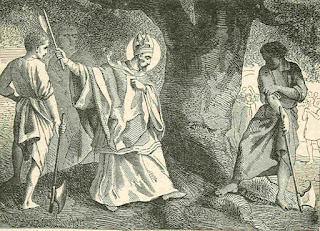Unfortunately, this increase in wages did not result in an increase in quality of life. Inflation is not just a feature of modern economics. Because of the disruption in trade, etc., prices went up. Estimates from one scholar put the price increase at 27% just from 1348 to 1350.
On the other hand, individuals had more cash on hand. With the deaths came a transfer of wealth to relatives, so there was more money in the hands of each individual. Barbara Hanawalt's research found, for instance, that the money lender in a town or village was likely to be a widow who inherited from her husband (sometimes a few husbands in a row) and used it to support her neighbors.
The changes mentioned in the preceding two paragraphs helped lead to the decline of the class called "serfs." There was more mobility, and the attempts to keep laborers tied to one lord's manor or demesne became increasingly difficult. Serfs could ask for higher wages or a larger percentage of the crops they harvested. The peasant class began to accrue more wealth. A generation or two would see a larger "middle class" forming.
Another change (difficult to quantify) came in the Church. St. Boniface centuries earlier was said to lament that "In the old days our priests were of gold and their chalices of wood; now the priests were of wood and their chalices are gold." The Black Death left many Church positions and parishes empty. The Church had to ordain many new priests quickly to fill appointments.
When the Black Death struck Europe in 1347, the increasingly secular Church was forced to respond when its religious, spiritual, and instructive capabilities were found wanting. The Black Death exacerbated this decline of faith in the Church because it exposed its vulnerability to Christian society.
...
Part of the reason why the Catholic Church was so negatively affected by the plague was due to the deterioration in the quality of its clergy. A great number of priests succumbed to the pestilence, and the individuals whom the Church recruited to take their place could not adequately perform their duties. [link]
Tomorrow I'm going to talk about England's attempts to control the movement of peasants away from their obligated land to find new jobs.










